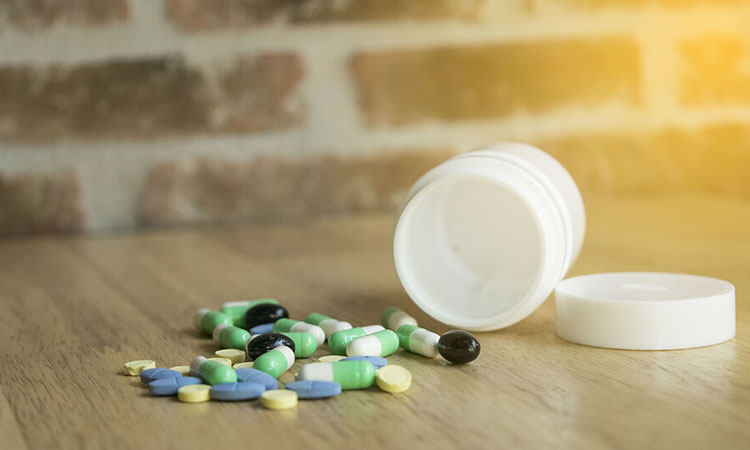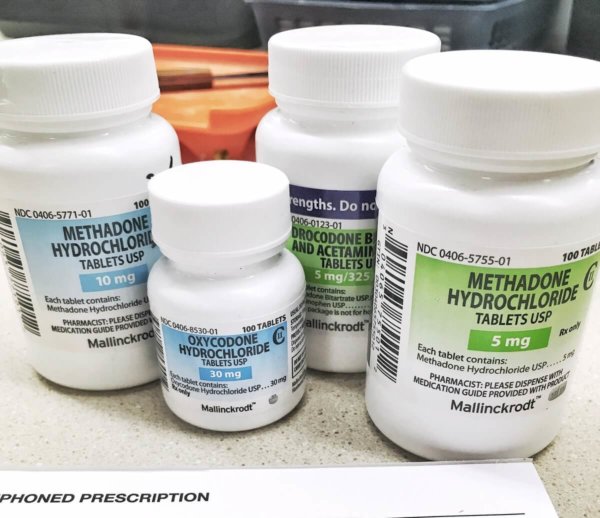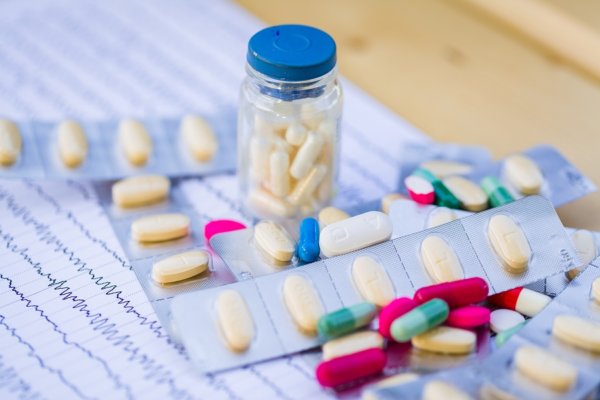
Prescription drug abuse occurs when a patient takes too much medication too frequently, or a person uses the medication illicitly without a prescription. Continually abusing the drug over an extended period or increasing the dosage often leads to the development of tolerance, dependence, and addiction.
Tolerance is a physiological condition characterized by the diminished effectiveness of a drug and the user increasingly requiring larger dosages to experience the desired effect. Along with tolerance, dependence on the drug can occur as the body gradually becomes accustomed to the drug’s ubiquity and unable to function without it. When the user attempts to quit, consequences include the manifestation of highly unpleasant withdrawal symptoms.
In addition to tolerance and dependence, the essence of addiction is the onset of compulsive drug-seeking behavior. At this point, abuse has become an ingrained necessity and can be very challenging to overcome. Abuse and addiction to prescription drugs can result in severe long-term outcomes, including physical injury and mental health disorders, and also affect interpersonal and professional relationships.
What Are Prescription Drugs?
Prescription drugs include any form of pharmaceuticals that cannot be legally obtained without a prescription dispensed by a licensed health care provider. Because prescription medications require a doctor’s signature to receive, they can be misused/abused in various ways, including the following:
- Obtained from a family member or friend who has a prescription
- Purchased illicitly on the black market
- Taken in larger doses or more often than directed by a doctor
- Acquired by doctor shopping, or the practice of visiting multiple doctors or pharmacies attempting to obtain more drugs
Commonly Abused Prescription Drugs
Many prescription drugs are not misused or abused as often as others due to the different effects of each drug. Psychoactive prescription medication that has a significant potential for abuse is classified in distinct groups according to their properties.
Opioids
Opioids are prescription drugs which bind to the opioid receptors in the body’s central nervous system (CNS) and work to diminish moderate to severe pain.
Because opioids have a high potential for abuse and addiction, they are not available without a prescription. Some of the most common opioid prescription painkillers include the following:
- Oxycodone (Percocet and OxyContin)
- Meperidine (Demerol)
- Tramadol (Ultram)
- Morphine (MS Contin)
- Fentanyl (Duragesic)
- Codeine (Tylenol 3 and 4)
- Hydrocodone (Lortab, Norco, Vicodin)
- Hydromorphone (Dilaudid)
- Methadone
When used as directed by a physician, opioids can be very effective at relieving pain. The use of opioids can improve the quality of life for those who suffer from acute or chronic pain following surgery, injuries, as well as during cancer treatment or palliative care.
Opioid tolerance and dependence can develop quickly, however, and addiction can form within just two weeks of regular use. If people increase their doses too much due to tolerance and/or concurrently abuse other drugs or alcohol, they run the risk of experiencing severe complications. Taking too many opioids can put an individual in imminent danger of respiratory depression and death.

Stimulants
Stimulant medications are usually only prescribed to those with attention-deficit hyperactivity disorder, narcolepsy, or obesity. They can increase energy and alertness, elevate blood pressure, and suppress appetite.
Stimulant prescription drugs are usually consumed orally in pill form, but some can be delivered through the skin as a patch or a liquid. Stimulants vary on the duration of effectiveness and include three categories: short-acting, intermediate-acting and long-acting.
The most popular short-acting stimulant prescription drugs include the following:
- Adderall
- Focalin
- Dexedrine
- ProCentra
- Zenzedi
- Ritalin
Intermediate-acting stimulants are effective for a longer period than short-acting ones but still require a regular dosage to work properly. The most common include the following:
- Evekeo
- Ritalin SR
- Metadate ER
- Methylin ER
Long-acting stimulants do not require dosing and can continue to be effective for hours, or even days. The most common include the following:
- Adderall XR
- Adzenys XR-ODT
- Concerta
- Daytrana
- Focalin XR
- Metadate CD
- Quillichew ER
- Quillivant XR
- Ritalin LA
- Vyvanse
Central Nervous System Depressants
Depressants function by reducing activity in the brain and central nervous system and include subcategories of drugs such as benzodiazepines, hypnotics, and barbiturates. Most depressants work by controlling the release of GABA, a brain neurotransmitter also known as gamma-aminobutyric acid. GABA reduces brain activity and leads to feelings of relaxation and drowsiness.
Depressants are frequently prescribed to those who suffer from sleep disturbances or anxiety/panic disorders. The most frequently used prescription depressants include the following:
- Barbiturates
- Antipsychotics
- Benzodiazepines (benzos)
- Sleep medications such as Ambien and Lunesta
Among the most commonly prescribed benzos are diazepam (Valium), alprazolam (Xanax), and clonazepam (Klonopin). These are typically prescribed to treat panic attacks and reduce anxiety. However, if used long-term, people can develop tolerance, dependence, and addiction.
Sleep medications include eszopiclone (Lunesta), zolpidem (Ambien), and zaleplon (Sonata). They act on the same receptors as benzos but have less potential for abuse and dependence.
Barbiturates include drugs such as phenobarbital (Luminal Sodium), mephobarbital (Mebaral), and pentobarbital sodium (Nembutal). Once widespread, they are now prescribed much less often than other sedatives due to their higher potential for overdose.

Antipsychotics
Antipsychotics are prescription medications that treat mental health disorders such as schizophrenia or symptoms related to bipolar disorder or Tourette’s syndrome. Commonly used antipsychotics include the following:
- Aripiprazole
- Amisulpride
- Clozapine
- Chlorpromazine
- Flupentixol
- Haloperidol
- Levomepromazine
- Olanzapine
- Perphenazine
- Pericyazine
- Quetiapine
- Risperidone
Other Pain Medications
There have been a number of reports of people abusing some non-opioid pain relievers, such as gabapentin (Neurontin) and pregabalin (Lyrica), although this is much less common that opioid abuse. These drugs are indicated for the treatment of conditions such as nerve pain, fibromyalgia, and epilepsy.
Prescription Drug Abuse
The development of addiction to prescription drugs is not always, but frequently the result of the misuse or abuse of opioids, stimulants, or benzodiazepines.
Some people may be more predisposed than others to develop an addiction to prescription drugs, and this may involve several factors, including the following:
- Height, weight and other personal characteristics
- A family history of alcohol or drug abuse
- The prescription drug they are currently taking
- Whether they are being treated for a mental health disorder or acute or chronic pain
- Past or current addictions to other substances, such as tobacco, other drugs, or alcohol
- Exposure and vulnerability to peer pressure or an environment where drug use is acceptable or encouraged
- Accessibility to prescription drugs, such as having them present in the home
While some face an increased risk, it is important to stress that anyone can develop an addiction to prescription drugs over time if they misuse or abuse the drug for a prolonged period. Although there have been numerous reports of people who have developed tolerance, dependence, and addiction to a drug while taking it as prescribed by a physician, this occurs less common than as a result of misuse or abuse.
Medical Consequences
Potential complications of prescription drug abuse are numerous. Opioids can cause a blood pressure drop and breathing to be reduced, and misuse increases the risk of experiencing a life-threatening overdose.
Benzos and sedatives have been associated with memory problems, low blood pressure, and depressed breathing, and an overdose can lead to coma or death. Sudden discontinuation of these medications can also induce life-threatening withdrawal symptoms that may include nervous system hyperactivity, seizures, and in some cases, death.
Stimulant abuse has been associated with dangerously high body temperature, heart problems, high blood pressure, seizures, tremors, aggressiveness, hallucinations, and paranoia.
Treatment for Prescription Drug Abuse and Addiction
An addiction to prescription drugs can be life-threatening. Those who suffer are encouraged to seek professional treatment as soon as possible.
Recovery By The Sea offers a comprehensive, evidence-based approach to addiction treatment and is comprised of therapeutic services vital to the recovery process, such as psychotherapy, individual and family counseling, group support, and aftercare planning.
We provide clients with the resources and support they need to achieve abstinence and experience long-lasting sobriety and improved well-being. Contact us today and discover how we can help you reclaim your life and experience the happiness and harmony you deserve!